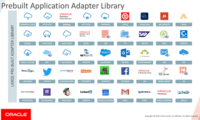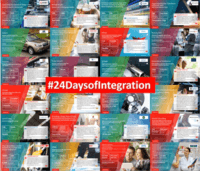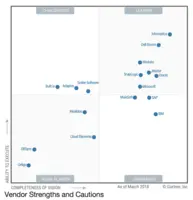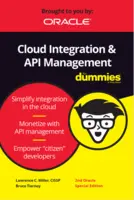Overview
What is Oracle Integration (OIC)?
The Oracle Integration Cloud Service is an iPaaS providing prebuilt integration flows between applications, including other Oracle products. The Integration Cloud Service is scaled for enterprises, with prebuilt codeless adapters for on-premises and SaaS systems and low-code automation capabilities.
Recent Reviews
Awards
Products that are considered exceptional by their customers based on a variety of criteria win TrustRadius awards. Learn more about the types of TrustRadius awards to make the best purchase decision. More about TrustRadius Awards
Popular Features
- Monitoring console (22)9.292%
- Pre-built connectors (21)7.878%
- Connector modification (21)7.878%
- Support for real-time and batch integration (22)5.858%
Pricing
Entry-level set up fee?
- Setup fee optional
For the latest information on pricing, visithttps://cloud.oracle.com/en_US/OIC/pric…
Offerings
- Free Trial
- Free/Freemium Version
- Premium Consulting/Integration Services
Would you like us to let the vendor know that you want pricing?
22 people also want pricing
Alternatives Pricing
Features
Return to navigation
Product Details
- About
- Integrations
- Competitors
- Tech Details
- Downloadables
- FAQs
What is Oracle Integration (OIC)?
Oracle Integration (OIC) is an iPaaS which simplifies application integration of on-premises and cloud applications like: Oracle ERP, Oracle HCM, Oracle CX applications on-premises and in the cloud. OIC provides a cloud-based user experience and the intelligence of a self-driving, self-designing, and self-repairing integration system. Oracle Integration frees the user from having to write manual integration code , and allows focus on building innovative solutions. The platform includes: prebuilt integrations, machine learning-based recommendations, and an extensive library of application adapters for secure, enterprise-grade connectivity.
The key capabilities and benefits include:
The key capabilities and benefits include:
- Increased business agility with visual, low-code process automation.
- Faster integration with pre-built adapters for SaaS and on-premises systems.
- Visual development environment to creat and host business applications with a visual development environment
- Business processes to create apps.
Oracle Integration (OIC) Features
Cloud Data Integration Features
- Supported: Pre-built connectors
- Supported: Connector modification
- Supported: Support for real-time and batch integration
- Supported: Data quality services
- Supported: Data security features
- Supported: Monitoring console
Oracle Integration (OIC) Screenshots
Oracle Integration (OIC) Videos
Integrate Business Applications and Data
Process Automation in Oracle Integration Cloud
What is Oracle Application Integration
Create Web & Mobile Apps
Oracle Integration (OIC) Integrations
- Oracle Fusion Cloud HCM
- Oracle Fusion Cloud ERP
- ServiceNow IT Service Management
- Oracle PeopleSoft HCM
- Oracle E-Business Suite Procurement Contracts
- SAP Concur
- Oracle JD Edwards World, discontinued
- Workday Human Capital Management
- Meta Business Suite
- DocuSign
- Twitter Ads
- SAP SuccessFactors
- SAP Business Warehouse (SAP BW)
- formerly SAP NetWeaver Business Warehouse
- Oracle Netsuite
- Oracle CRM
- Salesforce
- SAP Ariba
- Microsoft Email
Oracle Integration (OIC) Competitors
- Informatica Cloud Data Integration
- MuleSoft Anypoint Platform
- Dell Boomi AtomSphere
Oracle Integration (OIC) Technical Details
| Deployment Types | On-premise, Software as a Service (SaaS), Cloud, or Web-Based |
|---|---|
| Operating Systems | Windows, Linux, Mac |
| Mobile Application | No |
| Supported Countries | Worlwide |
Oracle Integration (OIC) Downloadables
Frequently Asked Questions
The Oracle Integration Cloud Service is an iPaaS providing prebuilt integration flows between applications, including other Oracle products. The Integration Cloud Service is scaled for enterprises, with prebuilt codeless adapters for on-premises and SaaS systems and low-code automation capabilities.
Informatica Cloud Data Integration and MuleSoft Anypoint Platform are common alternatives for Oracle Integration (OIC).
Reviewers rate Monitoring console highest, with a score of 9.2.
The most common users of Oracle Integration (OIC) are from Enterprises (1,001+ employees).










